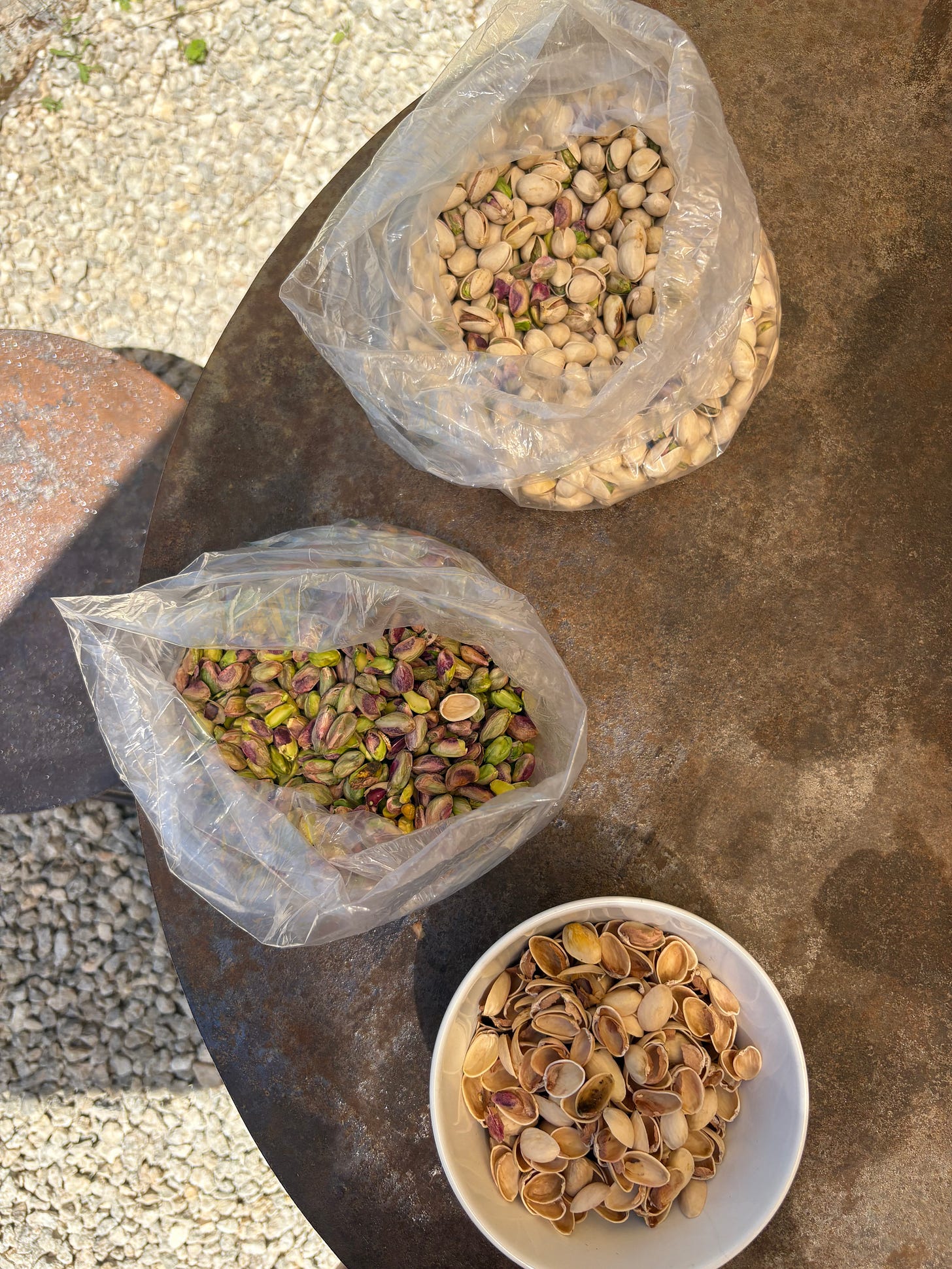Sicily Part II: Man, What a Town!
Are your Thunder or Lightning? Chastity or Lust? Lemon or Almond? Bits, bobs (boobs?), and observations from Italy's big island.
There is a post on The Paris Review blog that I thought about a lot on our trip. In it, Sophie Haigney asks in a game she calls Dichotomies, “Are You Thunder or Lightning?” When presented with two binary qualities, which would you choose to define yourself? I’m thunder (less flashing strike, more low rumble), but what does thunder mean to you? Of course, it’s silly and oversimplifying and relative— that’s the point. What she’s really asking of you is to draw a line in the sand about how you see yourself.
The binary on my mind while in Sicily was this: are you a Man About Town, or a Man, What a Town type? (Haigney calls the latter “helluva town guys,” but I misremembered and am sticking with my knockoff.) Men About Town have a full calendar, bopping from one new hotspot to the next to try a little bit of everything. Man, What a Town folks are the self-identifying regulars. They are the people content to have their ceremonial Wednesday beers with the boys at the same old dive, but whose consistency is a social currency that buys them insight into the best undiscovered <fill in the blank> in the city.
I had planned a Man About Town vacation: lunch reservations made months in advance, a hierarchy of ricotta-filled sweet treats to try, indistinguishable Baroque towns to visit. Which is maybe why, with our grand plans suddenly curtailed to include only what was local, accessible by train, or within Ubering distance, I felt relief. Because, man, what a town!
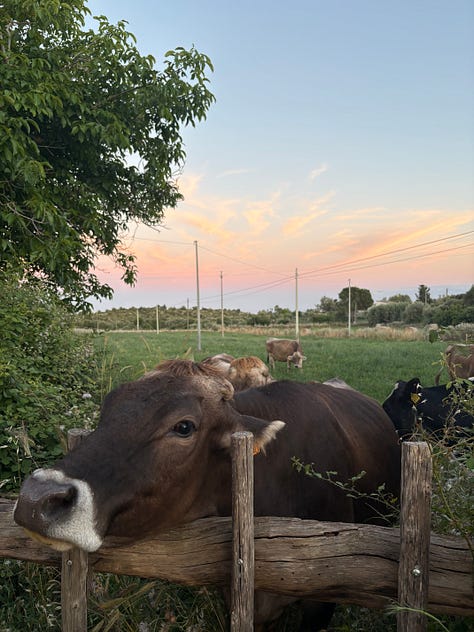
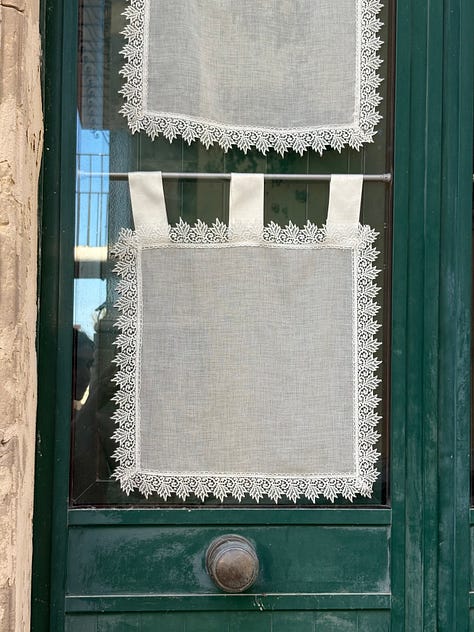
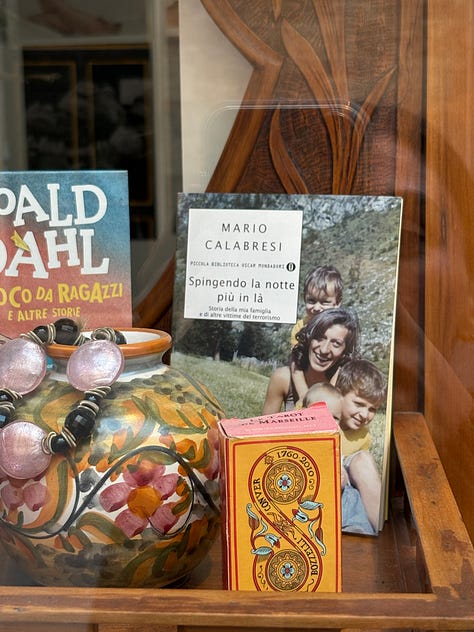
Dessert First
I had an agenda to push when Ed and I were making the decision of where in Italy we wanted to vacation, and that agenda was Caffè Sicilia. Notably featured on ‘Chef’s Table: Pastry,’ Corrado Assenza’s pastry shop in Noto is a must-stop for Men About Town, helmed by a Man, What a Town guy. In the episode, the agri-hero credited with saving the Romana almond sounds like a play-growling Golden Retriever when he sweetly decries the industrialization kneecapping Sicilian farmers. IRL, our server at the caffè seemed less enthused and I constantly felt like I was doing something wrong (existing). Pilgrimage fatigue, aptly diagnosed by my friend Echo. Three visits does not a regular make, but that we were effectively marooned in Noto without a car meant that I could perfect my order over time (and win a smile from Il Signor Grump), and did I ever.
Early in the episode, Assenza himself presents a dichotomy that divides Sicilians: do you start your day with lemon granita, or with almond? And sure, you could go to the caffè and pick a side. On my first visit, I staked my flag on almond territory, and it was predictably delicious. But I found myself looking for…more. On our second visit, I found it in the almond milk, a slightly pulpy blend of almonds, water, and sugar that tastes like fresh dairy spiked with marzipan. All the joys of the granita but distilled, no utensil or manipulation coming between me and the purest taste of almond. By our last visit, I’d cooked up the ideal breakfast for two, confirmed by the envy I felt as I overheard another couple order exactly this as we got up to leave one last time:
(2) flavors of granita (wild strawberry or bust)
Brioche
Panna
Cannolo di ricotta
(2) Caffè macchiatos
Almond milk
No more, no less. I liked to give my macchiato cup a little almond milk rinse to catch every last drop of espresso. It approximates the stellar caffè lecchese at Bread & Salt in Jersey City, which I think about not infrequently.
Talk about dichotomies: you could ask Italians to choose between chastity and lust, it’s just that they will break the rules and choose both. The bedrock of Catholicism brought us the mommy of all sex symbols, Sophia Loren; Italy’s favorite chaste woman is commemorated with a titty-shaped pastry. The lore is that Saint Agatha, famously prude, had her breasts torn off with pincers. As a result, minne di sant’Agata can be found all over her hometown of Catania in a cloyingly sweet gesture of veneration. A mound of sweetened ricotta sits on a layer of sponge cake, gets wrapped in a veil of pistachio marzipan, and is topped with a perky candied cherry nipple— a Princess Cake with mob wife muscle and a wink. It’s absolutely too much, but sort of touching to see A-cups get the respect they deserve.
If that sounds like a cassata cake, it’s because they are essentially the same. For cassatina, I got takeaway from the Caffè Sicilia counter. Unlike other versions, you taste the sheep’s milk in the filling, the pistachio in the marzipan shell. Even in the most experienced hands, cassata is a lot of sugar for one sitting, but well-suited as a little snack you can sneak a bite of throughout, say, the train ride from Noto to Siracusa.
I was going to do a cannoli power ranking but I only ate three, and nobody celebrates a default winner. I’ll say that our Catanian Uber driver Giuseppe only eats cannoli at Pasticceria Savia, Cannolia in Scicli fries their shells to order, and eating a cannolo anywhere inevitably turns into scooping sweet ricotta with a shard of shell like you’re three margaritas in, going after chips and guac.
Returns & Trending Topics
We walked the sense-stimulating Catania fish market on back-to-back mornings. The first time timidly, as I wore my jelly sandals and spent the entire visit with my eyes darting between the bounty ahead and the fish guts underfoot. I wished I could tell the man kissing a raw squid that he’d have sold me on it after the first smooch, if only I had a kitchen in which to cook it. Fishmongers called songlike into the morning air, beckoning customers in a rhythmic cadence reminiscent of North African souks. I drank freshly-squeezed Sicilian Gatorade. We returned the next day to have another round of the Twinkie-sized panini being sold for €2 by a man at an oyster stall— small torpedoes of fresh anchovy and shaved ricotta salata, flakes of tuna steak studded with jewels of tomato.
Also at the market, I dusted off my college Italian to coyly ask for a taste of the Bronte pistachios. Instead, Ed and I both received a handful and were encouraged to drop the shells at our feet. So sweet and rich they were almost juicy. I went home with three pounds’ worth, which I spent an afternoon shelling until my thumbs chafed. One stall over, it delighted me to buy a few apricots and my first-ever loquat; it thrilled me even more the next morning when the vendor tucked an extra apricot into my brown paper bag in a gift of recognition.
My motives for visiting Sicily were twofold: to visit Caffè Sicilia, and to see Caravaggio’s The Burial of Saint Lucy. If Caravaggio was at the receiving end of the Church’s patronage, then the clinically depressed (me) are the beneficiaries of Caravaggio’s mastery of dominating darkness and striking, contrasting light. (Committed to the bit: the Basílica Santa Lucía al Sepolcro is largely windowless, but for €1 you can buy your own tenebristic four minutes of tepid spotlight on the painting.) Saint Lucy was a self-described Saint Agatha hypebeast also punished for her purity, only she lost her eyes in the tussle. Gratefully no one saw fit to make sweets in honor of her missing organs, only to commission the most influential artist of the Baroque period to paint her. We’re all culture-starved; feed yourself.
Every house negroni that we ordered defaulted to Punt e Mes in their build, and while I’ve never called a vermouth preference in a cocktail before, I’m going to start. The less bitter of the sweet vermouth options play a more deferential supporting role, but there’s a confidence to Punt e Mes’ intensity that is undeniably attractive, and unapologetically Italian. On one occasion I tried to get the skinny from our server as to why the norm is to crank up the bitterness, but he looked at me like I was American and said, “But it’s vermouth ¯\_(ツ)_/¯.” Live footage of me running to Leon’s to drink one with their Hanger Steak Frites.
The most memorable of what we ate and drank was the most simple: penne wallowing in melted anchovies and capers, finished with toasted breadcrumbs; spaghetti tightly dressed in a pistachio sauce and topped with three barely-cooked gamberi rossi; craggy hazelnut biscuits made with ancient grains. So good that when we returned to Lemon for more perfect pasta on our last night, we were validated by sitting next to the same couple we sat adjacent to on our first visit, also returning for more. Panificio Maidda in Noto might be down the block from Sicily’s most famous pastry shop, but if forced to choose between a sweet or savory snack, I think I’d go back for a third slice of sfincione al zucchine (and buy another bag of biscuits for the road).
I said something clickbait-y in my last post about yearning while wearing vintage as a recession indicator. Yes, I dug out my vintage Moschino capris for the trip, but shopping my own closet was the only maybe-sign of the economic times. Really, they’re just great pants. Really, I wanted to tell you how much I missed the feeling of longing for, then savoring, something.
Early in our trip, my friend Christine, who was on a Hudson Valley birthday escape with her husband, sent me a photo of her Mel The Bakery haul— one of everything from the pastry case, and I imagine at least one loaf of bread that didn’t make it into the shot. To prove I don’t think I’m a real journalist I did not fact-check this statement, but I counted seven pastries and I’m no fool. A real Man About Town order, I thought. “The correct amount of treats!” I replied.
And it was the correct amount of treats, for her. I went to Mel in March and relished the fact that, with so many options, I had to decide what it was I really wanted. I stuck with my signature order of a classic croissant. Most everything in the case appealed to me, but there’s something in the lost art of choosing that I find meaningful, the feeling of savoring more powerful than the having-it-all that makes me take more thoughtful bites. Not in a French Women Don’t Get Fat, “mindful eating” sense, but in the same way that Sicilians have so little, and yet their lives are rich.
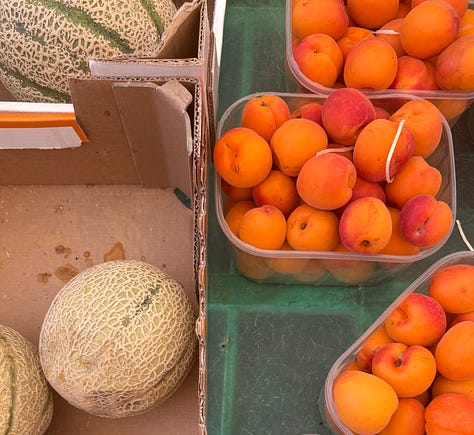
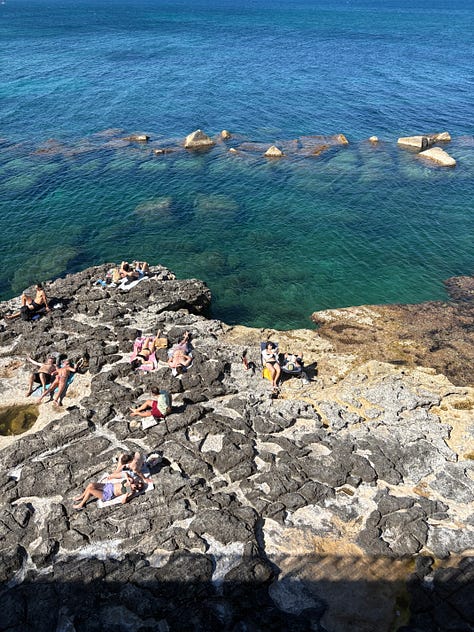
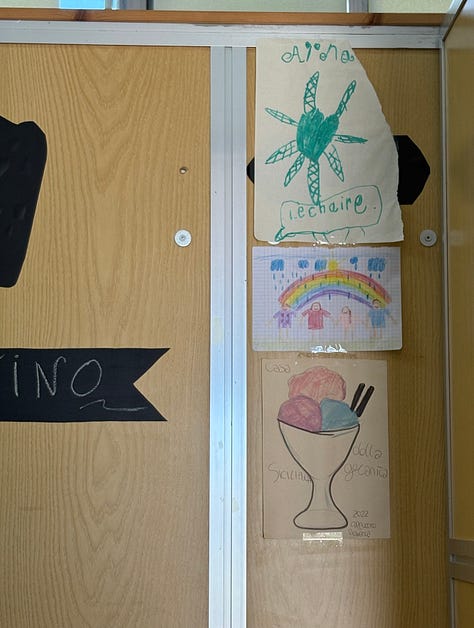
Sicily is an island of ingredients. Romana almonds, Bronte pistachios, fresh sheep’s milk and it’s ricotta, ragusano made from Modicana cows, citrus and grapes, wheat and wild fennel, sardines, eggplant, tomatoes. To tour the region is to trace a line from the sea or the land on which you’re standing to your plate and, due to the virtue of the ingredients and the island’s lineage of limited resources, with very little intervention in between. Ed often describes my home cooking as “making ingredients”— turning fruit into jam, confiting Sungolds, capturing a moment in time. It would be insulting if it weren’t accurate. In a place where “cooking” means to humble yourself to what is being grown, caught, or harvested locally, eating in Sicily is to be truly present there, in that moment.
Traveling can create in me a certain pressure to do the most, to take in the macro view, to leave no cannoli unturned. In Sicily I was reminded that I prefer a smaller snapshot, pixelated to granular detail. I, too, want less so that I can have more.
We’re playing Dichotomies. Are you Zoomed In, or Zoomed Out? I know which I am.



